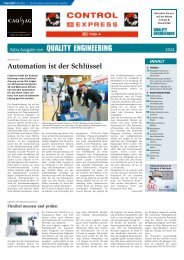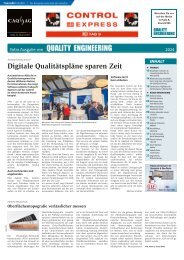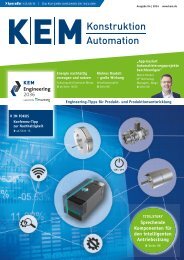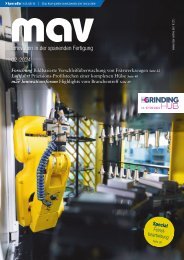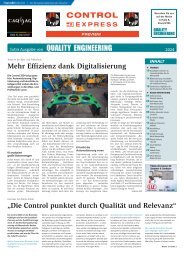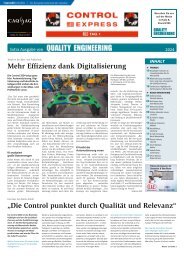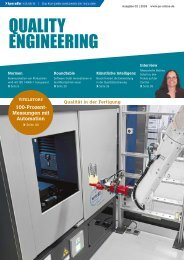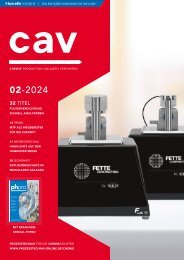EPP Europe P2.2022
You also want an ePaper? Increase the reach of your titles
YUMPU automatically turns print PDFs into web optimized ePapers that Google loves.
AT A GLANCE<br />
In this article, Koh Young<br />
details the importance of<br />
accurate CCI and<br />
measurement, and explains<br />
how its new 3D in-line DPI<br />
equipment can conduct<br />
2D and 3D inspection of<br />
transparent materials.<br />
Conformal coatings protect electronics<br />
from moisture, debris, and corrosion.<br />
They also add mechanical stability to<br />
help reduce failures and improve an<br />
electronic device’s reliability when it is<br />
exposed to harsh environments. But<br />
what happens if a coating is defective<br />
or simply too thin? Koh Young discusses<br />
the challenges of conformal coating<br />
inspection (CCI) and how its latest<br />
Neptune series can help.<br />
A<br />
conformal coating is a transparent protective<br />
film with a thickness of around 50um applied<br />
to a PCB to protect the board and its components<br />
from corrosion (caused by vibration, temperature<br />
changes, and so on) and from the environment. It is<br />
used on parts that need to offer increased product<br />
reliability via dustproofing and waterproofing. As<br />
conformal coatings significantly reduce the chance<br />
of circuit failure due to moisture, they are now being<br />
increasingly applied to products which necessitate a<br />
high level of reliability. There are various coating<br />
methods used today including dipping, brushing, and<br />
spraying. Selective spraying methods that only coat a<br />
specific area are also being more widely used.<br />
In addition to conformal coatings, various other<br />
dispensing technologies such as underfill and overcoating<br />
are emerging in the market. Underfill redistributes<br />
the thermomechanical stress created by<br />
the coefficient of thermal expansion mismatch between<br />
the silicon chip and organic substrate and is<br />
often applied to BGAs and CSPs in semiconductors<br />
or during SMT processes. In some medical applications,<br />
a droplet-shaped coating needs to be<br />
placed on the pad, in a process known as overcoating,<br />
and the height of this droplet needs to be<br />
measured. Indeed, as this example makes clear,<br />
some dispensing applications now also require specific<br />
inspection processes.<br />
<strong>EPP</strong> <strong>Europe</strong> » 11 | 2022 17





